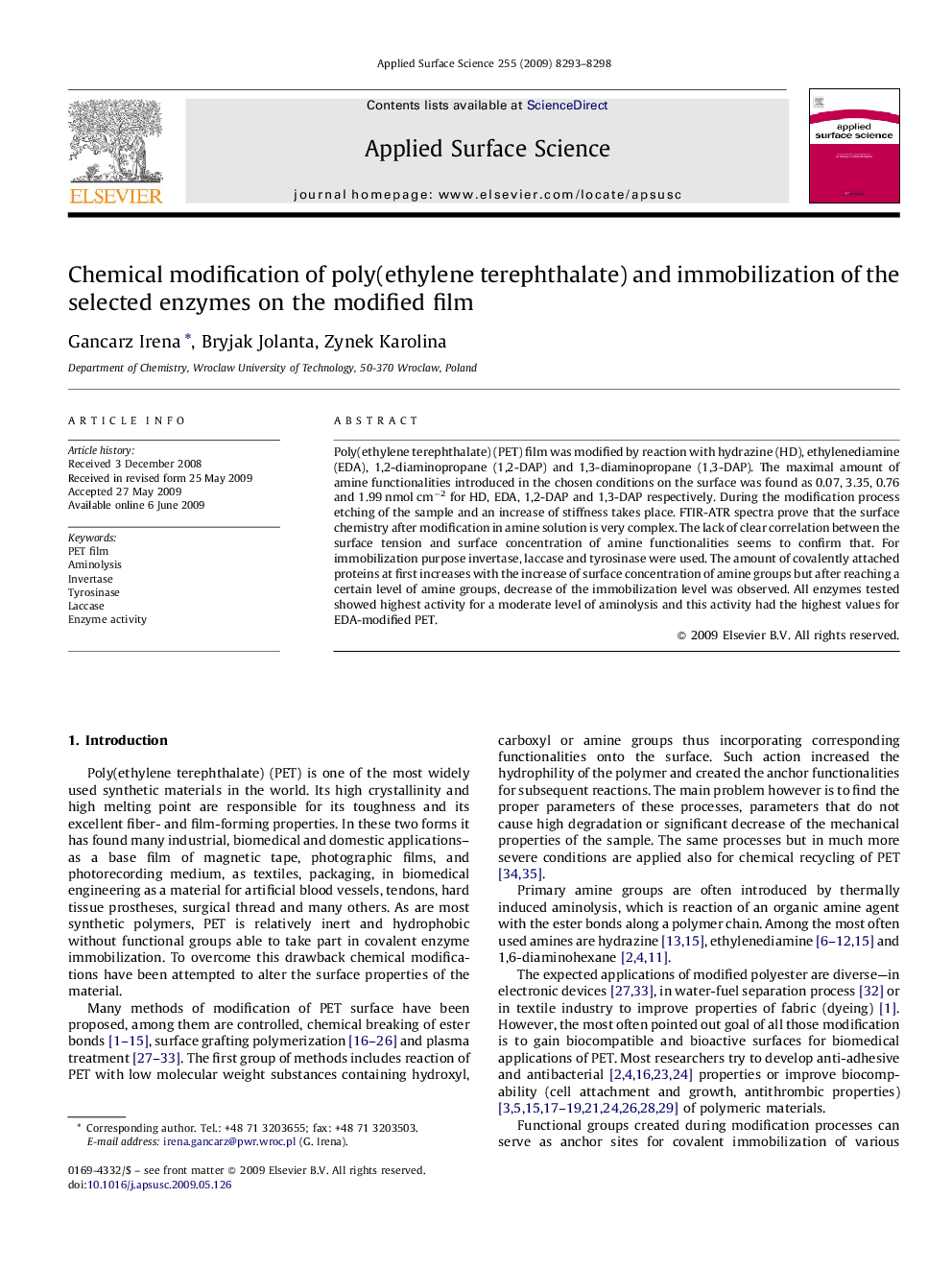| Article ID | Journal | Published Year | Pages | File Type |
|---|---|---|---|---|
| 5362440 | Applied Surface Science | 2009 | 6 Pages |
Poly(ethylene terephthalate) (PET) film was modified by reaction with hydrazine (HD), ethylenediamine (EDA), 1,2-diaminopropane (1,2-DAP) and 1,3-diaminopropane (1,3-DAP). The maximal amount of amine functionalities introduced in the chosen conditions on the surface was found as 0.07, 3.35, 0.76 and 1.99 nmol cmâ2 for HD, EDA, 1,2-DAP and 1,3-DAP respectively. During the modification process etching of the sample and an increase of stiffness takes place. FTIR-ATR spectra prove that the surface chemistry after modification in amine solution is very complex. The lack of clear correlation between the surface tension and surface concentration of amine functionalities seems to confirm that. For immobilization purpose invertase, laccase and tyrosinase were used. The amount of covalently attached proteins at first increases with the increase of surface concentration of amine groups but after reaching a certain level of amine groups, decrease of the immobilization level was observed. All enzymes tested showed highest activity for a moderate level of aminolysis and this activity had the highest values for EDA-modified PET.
